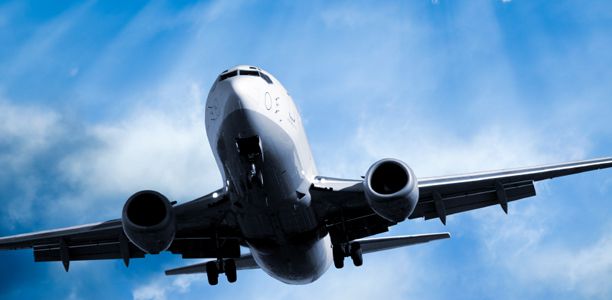There are many things to complain about when flying interstate or overseas, especially when couped up in economy class. And everyone has heard a story of the nightmare flight where a baby is crying the entire time.
But consider for just a moment air travel from the perspective of a baby. After being taken away from your cot, your play area, your toys and your high chair you are placed in an environment that is completely foreign in it’s smells, the feelings in being wooshed up into the sky and you have to stay put in one place for hours at a time! Frankly it’s quite scary and it is little wonder that babies might be become slightly upset.
There is no denying that traveling by plane with a baby is going to have its challenges. So what can parents do to make the process as pain free as possible both for their baby and their fellow passengers?
Terri has some experience with this topic after recently relocating to Australia from the UK with her 10 month old daughter.
We spoke to her about the things she found helpful when traveling with a baby jet-setter.
Riding for free
One of the first concerns parents might have about traveling with their baby is whether or not they have to have a ticket.
“Babies under two are allowed to just ride on your lap for the journey,” said Terri.
“Because my daughter is under two years old she didn’t have to have her own seat so we obviously didn’t have to buy her a ticket.
If the idea of having a baby on your lap for hours at a time sounds a bit uncomfortable Terri suggests finding out whether the airline can provide a bassinet for your child.
“When you are booking your tickets it pays to see if you can book seats that have the bassinet option,” said Terri.
“These bassinets attach to the wall or divider in front of the seat so your baby has somewhere to lie down or play without having to be stuck on your lap for the whole trip.”
Prepare for take-off
So once your baby’s passport is stamped and you are comfortable in your seats it’s time for possibly the hardest part of the journey, the take-off.
Along with the landing, taking off can cause some discomfort to your baby, because cabin pressure changes during take-off and landing and babies are often unable to equalise the pressure in their heads. Babies in their first week of life (less than seven days) should not travel by plane because they are too young to cope with the changing air pressure within the cabin.
But there are techniques that can help your child to cruise right through take-off without a worry.
“It is important during take-off and landing that babies and kids are sucking or swallowing to help alleviate the pressure in their ears,” said Terri.
“I wasn’t breastfeeding at the time but the breast or a bottle is good during take-off and landing. I also found that dummies or the squeeze packs of puree you can get work well.
“Just use what your baby prefers and will be happy to suck or chew.
“Using their usual food and drink is also helpful as it is something familiar during a time when they may be scared or uncomfortable.”
Making baby feel at home
Keeping your baby surrounded by as much familiarity as possible, Terri said, is one of the key things which helps keep them happy and comfortable throughout the flight.
“Whether it’s a short flight or a long international flight try make sure your baby has things they are used to eating and toys from home that they are used to playing with,” she said.
“To bring some familiarity on board we brought a few of her favourite toys like her play phone, some books and some colouring books.
“Before leaving London we loaded up lots of new baby apps and shows on our iPad which was very successful.
“To help her sleep we also brought our daughter’s sleeping bag that she always uses and her stuffed dog that she sleeps with.
“We gave her a bottle before we wanted her to go to sleep just as we would at home.
“Any way that you can try to implement their usual routine throughout the flight is going to be beneficial.
“So it’s worth trying keep some nap and food times as close to normal as possible, especially if it is a really long flight or a series of connecting flights.”
Airline food
Terri strongly recommends bringing your own baby food with you rather than relying on airline food.
“It is much better to have some food that you know your baby is going to like and they are comfortable with rather than finding out once it’s too late that they won’t eat the airline food .
“You really don’t want to be stuck with nothing.
“Those squeeze packs I mentioned before are also good for general feeding throughout the trip not just landing and take-off. Because you don’t really need a bowl or spoon it’s pretty convenient.
Some parents may be concerned about taking baby’s drinks or food through security but Terri said she very rarely has any problems.
“In general, airport security is fairly considerate when it comes to parents and babies,” she said.
“I haven’t had any problems. Sometimes they will make me taste a bit of the food or the drink but there is no problem with taking it on board.”
Of course every airport and airline is slightly different so it’s a good idea to check with the relevant authorities as to what food and drink you’ll be allowed to bring on board.
Dealing with other passengers
Taking a young child on a trip is going to have its challenges and not least of those is trying not to irritate your fellow passengers too much.
Terri said that while she didn’t experience any outright rudeness from other passengers she was well aware of how annoying a crying baby can be and went to some lengths to keep her daughter’s crying to a minimum.
“We definitely got some looks from other passengers,” said Terri.
“No one made an issue of it but you could tell when she was crying that other passengers were annoyed.
“She cried several times throughout the flight. Because she was overtired and irrational it didn’t take too much to make her cry.
“When she would start to cry my husband and I would go into panic mode- it is a terrible feeling because even if none of the passengers say anything rude, you know they are thinking it. I would be too in their shoes.
“Our approach was ‘whatever it takes’, and with our daughter, food solves most problems. There were times when a snack or bottle wouldn’t calm her, and then we would take her in the galley area or in the bathroom until she calmed down.
“It was a stressful situation for us, and there were times when we couldn’t calm her down and then my husband and I would lash out at each other, which of course didn’t help anything.
While Terri and her husband were stressing out over their baby at least they had some good support from the airline staff, who Terri says were extremely helpful.
“The staff were very attentive to my baby, and willing to help, maybe too much,” she said.
“Whenever she cried they would come over and try to help or ask if they could do anything.
“They let us stand in the galley areas with her when she was crying so we could keep her away from the other passengers.
“They gave her little toys and offered us food for her.
After the long haul flight
Adjusting to new time zones and making up for lost sleep can really take its toll after a long flight. The impact of a break in routine along with a strange new environment can be difficult for a baby too.
After more than 20 hours of flying Terri said it was pretty hard on all three of them but surprisingly, or maybe not, bubs was able to settle in quicker than mum and dad.
“There was only a 7 hour time difference, but we had just flown about 20 hours, so we were all totally out of whack,” said Terri.
“We landed in Perth around midnight, got to our hotel by 2am, and we all crashed.
“We slept until about 2pm the next day, and then tried to start the day as if it were 2pm, and not the morning.
“We went outside to get some daylight, and kept our daughter awake until about 9pm, then started her normal bed time routine.
“She went to sleep ok, but was up a few times during the night and we’d have to bring her out of bed and sit with her for a bit before she’d go back to sleep.
“Each night would get a bit better, but I’d say it took at least 2 weeks to get her completely adjusted. All in all, I think she adjusted faster and easier than my husband and I did.
Happy travels
There are many things to take into consideration when you travel with a baby and it takes some planning. But the more planning and preparation you do the better your trip will be, for both baby and parents.
“Make sure they are comfortable and have things around them that are familiar and smell and taste like home from their toys to blankets to food. The more ‘at home’ they feel the less likely they are going to be overwhelmed by the situation.
“And be prepared to help them slowly assimilate into their new routines over a couple of weeks.”




 (4 votes, average: 3.50 out of 5)
(4 votes, average: 3.50 out of 5) 






